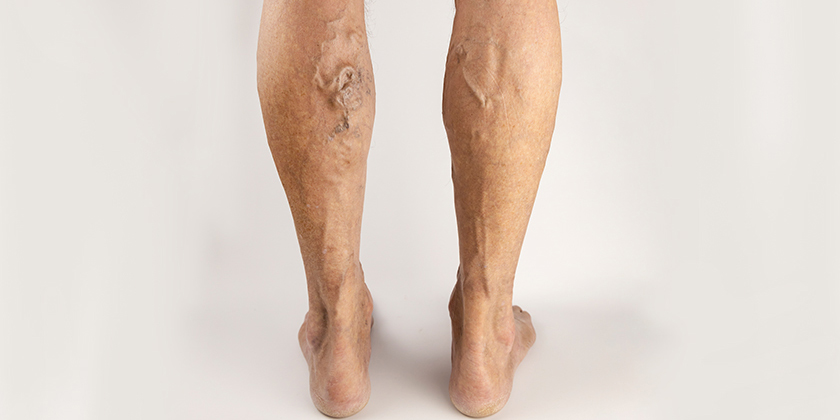The Ultimate Guide to Understanding Common Vascular Conditions
What Are Common Vascular Conditions?
Why Understanding Vascular Conditions Matters
Vascular diseases result in 17 million cardiovascular-related deaths each year according to Global Burden of Disease data. Through five years of public health research I have examined how vascular health awareness helps prevent severe outcomes such as strokes and amputations. When people understand their health better they choose early treatment options and maintain lifestyle habits that prevent diseases.
Key Common Vascular Conditions
1. Peripheral Artery Disease (PAD)
Peripheral artery disease creates reduced blood flow due to arterial narrowing affecting primarily the legs.
- Prevalence: The CDC reports that peripheral artery disease affects between 8 and 12 million American adults, predominantly those aged 60 and older.
- Symptoms: The Mayo Clinic lists symptoms of peripheral artery disease as leg pain during walking (claudication) and numbness along with cold feet.
- Treatment: Patients can treat peripheral artery disease through lifestyle adjustments, statin medications, and angioplasty procedures as recommended by the American Heart Association.
- Risk Factors: Smoking, diabetes, high cholesterol (NHLBI).
2. Varicose Veins
Varicose veins develop as swollen and twisted blood vessels when vein walls become weak and often affect leg veins.
- Prevalence: Impacts 23% of adults globally (Cleveland Clinic).
- Symptoms: Bulging veins, aching, heaviness, itching (NHS).
- Treatment: The American Academy of Dermatology recommends treatment options for varicose veins which include compression stockings and sclerotherapy as well as laser therapy.
- Prevention: The Mayo Clinic advises that regular physical activity coupled with weight control and avoiding extended periods of standing helps prevent varicose veins.
3. Deep Vein Thrombosis (DVT)
A deep vein thrombosis represents a blood clot formation inside a deep vein which most commonly occurs in leg veins.
- Prevalence: Affects 1–2 per 1,000 people annually (CDC).
- Symptoms: The American Society of Hematology identifies swelling along with pain and redness and warmth as symptoms in the affected limb.
- Treatment: Anticoagulants (e.g., heparin), thrombolytics, compression therapy (NHLBI).
- Complication: According to the Mayo Clinic the danger exists that a blood clot could reach the lungs causing pulmonary embolism.
4. Aneurysm
The aneurysm represents a bulging section of a weakened artery wall that commonly occurs in the aorta or brain.
- Prevalence: The American Heart Association reports that abdominal aortic aneurysms occur in 2 to 8 percent of older male populations.
- Symptoms: People with aneurysms usually do not show symptoms yet they can potentially cause pain or a pulsating feeling according to Cleveland Clinic.
- Treatment: The NHS recommends monitoring patients with large aneurysms and surgical intervention through stenting or grafting when necessary.
- Risk Factors: Hypertension, smoking, family history (Mayo Clinic).
Causes and Risk Factors
- Lifestyle: A sedentary lifestyle combined with obesity and tobacco use increases the likelihood of developing peripheral artery disease and varicose veins (CDC).
- Medical Conditions: Diabetes together with hypertension and high cholesterol levels lead to the development of aneurysms and deep vein thrombosis according to NHLBI.
- Genetics: The American Heart Association reports that family history increases the chance of developing varicose veins as well as aneurysms.
- Trauma or Immobility: Extended periods of sitting combined with surgery increase the risk of developing deep vein thrombosis according to the American Society of Hematology.
Prevention Strategies for Vascular Health
- Healthy Diet: To maintain vascular health eat foods low in saturated fats and high in fiber while adding omega-3 fatty acids (American Heart Association).
- Exercise: Following CDC guidelines for 150 weekly minutes of moderate exercise helps improve blood flow which stops varicose veins and peripheral artery disease (PAD).
- Smoking Cessation: Cessation of smoking reduces the risk of developing all common vascular diseases according to NHLBI.
- Regular Screenings: Aneurysms and PAD identification happens early during ultrasound or blood pressure tests as per Mayo Clinic.
- Compression Therapy: People who wear compression stockings can prevent deep vein thrombosis during extended flights or periods of immobility according to Cleveland Clinic.
Challenges in Managing Vascular Conditions
- Asymptomatic Nature: Aneurysms together with early-stage peripheral arterial disease (PAD) typically remain unnoticed until they develop severe symptoms according to NHS data.
- Access to Care: Rural regions experience treatment delays due to a lack of vascular specialists (WHO).
- Comorbidities: According to the American Heart Association, vascular health management becomes more complex due to diabetes and obesity.
FAQ: Common Vascular Conditions
What are common vascular conditions?
Peripheral artery disease and varicose veins along with deep vein thrombosis and aneurysms represent common vascular conditions according to the Mayo Clinic.
How can I prevent varicose veins?
Maintaining proper weight levels and avoiding extended periods of standing while exercising aids in preventing varicose veins as recommended by Cleveland Clinic.
What causes DVT?
Surgery procedures along with genetic predispositions and immobility lead to the development of deep vein thrombosis according to the CDC.
Seek medical help for vascular issues when you experience leg pain, swelling, or changes in skin color which indicate vascular health problems.
If you experience leg pain, swelling or notice changes in skin color consult a healthcare provider for potential vascular problems (NHLBI).



